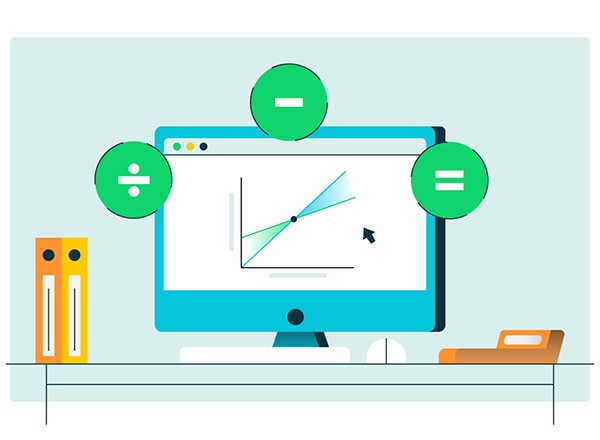In this article, you will learn:

Using Industry Analysis To Crush The Competition
There are a host of external factors that impact your business performance and decisions. It is quite challenging to control and access such environmental conditions as they are vast in number.
Therefore, you need a framework to organize information relating to such environmental factors. Such a system must be effective in terms of distinguishing between necessary and merely important information.
Though, the core of your business environment includes the interaction and the relationship between three key players. That is customers, suppliers, and competitors. However, the general industry environment factors are the key determinants of threats and opportunities your business will face in the future.
Thus, the primary issue is to understand how these general environmental factors impact your business’s industry environment. For this, you need to undertake an industry analysis.
In this article, we are going to talk about what is industry analysis, its types, and how to do industry analysis to beat the competition.
What is Industry Analysis?
Industry analysis refers to a methodology that helps your business to understand its position against its competition. Such a tool helps you to understand the competitive dynamics of your industry. That is it gives a snapshot of the vital external influences that continuously impact your industry environment.
This may include understanding your industry’s:
- changing demographic structure
- demand and supply
- intensity of competition
- bargaining power of producers against other suppliers
- level of profitability
- general economic trends
- technological changes, etc
Thus, industry analysis helps you to determine opportunities and threats that your company may face in the future. It gives you a picture of the present and future situation of your industry. Such an analysis would help you to take key business decisions. This is because it gives you a clear picture of your position against your competition in the industry.
Types of Industry Analysis
The most generic layer of your industry environment is the macro environment. It consists of the environmental factors that impact almost all the organizations within your industry.
The next layer consists of the industry or the sector. A sector consists of a group of firms producing the same products or services. Finally, the most immediate layer of your business environment consists of your competitors and markets.
Accordingly, you need to adopt a specific framework. This must be undertaken to determine how each of these layers impacts your organization.
Macro-Environment
- The PESTEL Framework
The macro-environment includes Political, Economic, Social, Technological, Environmental, and Legal environments. These may impact your business organizations.
Thus, to study these external influences you can adopt the PESTEL Framework. This framework categorizes the environmental influences into six main types, as mentioned above.
So, you need to understand the key drivers of change. And also the differential impact these external influences may have on your industry.
- Political Factors
The following are the political factors that you must consider while understanding your industry’s macro-environment.
- government stability
- foreign trade regulations
- taxation policy
- social-welfare policy
- Economic Factors
The next set of external influences include economic factors. The following are the economic factors that you need to consider while assessing your industry.
- business cycles
- interest rates
- inflation
- money supply
- gross national product trends
- rate of unemployment
- disposable income
- Socio-cultural Factors
The Socio-Cultural factors include:
- education level
- lifestyle changes
- population demographics
- income distribution
- social mobility
- attitudes towards work and leisure
- consumerism
- Technological Factors
The technological factors that can impact your business include:
- government spending research
- the focus of government and the industry on the technological effort
- new developments or discoveries
- the speed at which the technology is transferred
- rates of obsolesce
- Environmental Factors
The environmental factors include:
- environmental protection laws
- consumption of energy
- waste disposal
- Legal Factors
The legal factors include:
- the competition law
- law of employment
- health and safety rules
- laws relating to product safety
It is important to note that the macro-environmental influences are not independent of each other. Rather, many of them are linked or associated. For example, technological developments are based on lifestyles, the standard of living, and the way people work.
Thus, besides studying the PESTEL factors, you also need to understand the key drivers of change. And also the differential impact of such changes on your industry, market, or sector.
The key drivers of change may include:
- market globalization
- globalization of competition
- cost globalization
- globalization of government policies
- Porter’s Model
- The PESTEL analysis identified the key drivers of change. Further, it also identified the factors that influence your business’s immediate competitive environment.
- Porter’s model is another strategic tool. This helps you to understand the impact of macro-environment factors on your business’s competitive environment.
- However, Porter’s diamond model identifies a framework for classifying and analyzing certain factors. These factors influence the intensity of competition and profitability level in a specific industry.
- Further, this model suggests that there are some innate causes that make some nations and industries more competitive than others. Therefore, Michael Porter suggested a five forces framework. This framework helps to identify the sources of competition in your industry or sector. These include:
- Threat of Entry
The threat of entry of potential entrants would depend on the barriers to entry in such an industry. The barriers to entry are the factors that new entrants need to overcome if they want to compete successfully. Remember, barriers to entry are temporary factors causing delays to market entry. That is these are not permanent barriers for potential entrants. Typically, barriers of entry may include:
- economies of scale
- capital required for market entry
- access to supply or distribution channels
- the loyalty of customers or suppliers
- experience
- expected retaliation
- legislation or government action
- differentiation
- The Threat of Substitution
Your business may also face the threat of substitution. Substitution reduces the demand for specific product classes. This is because your customers switch to buying alternative product classes.
Furthermore, substitution depends upon whether the alternative product classes provide a higher perceived value to your customers. Therefore, there can be different forms of substitution. These include:
- product for product substitution
- substitution of need
- generic substitution
- Bargaining Power of Buyers
The power of buyers to bargain for the products and services may restrict the strategic freedom of your business. As a result, this may influence the margins and the financial attractiveness of your firm. Thus, the following are the conditions when the buyer power is high:
- concentration of buyers
- cost of switching a supplier is low
- the threat of supplier being acquired by the buyer
- Bargaining Power of Suppliers
The bargaining power of suppliers is another factor that can influence the profit potential of different parts of your industry. Thus, supplier power is likely to be high when:
- there is a concentration of suppliers over the fragmented source of supply
- cost of switching from one supplier to another is high
- possibility of the suppliers competing directly with their buyers
- Competitive Rivalry
All the above mentioned competitive forces influence the direct competitive rivalry between your firm and its rivals. Competitive rivals are the firms that sell similar products and services targeting the same consumer groups.
The following factors affect the degree of competitive rivalry in your industry.
- number of competitors in your industry
- industry growth rate
- high fixed costs
- high exit barriers
- differentiation of products or services
- SWOT Analysis
SWOT Analysis provides a summary of the key challenges posed by your business environment. Furthermore, it also provides an outline of the strategic capability of your firm that would impact your business’s strategy development.
The aim of such an analysis is to identify the current strengths and weaknesses of your firm. This helps in dealing with the threats or opportunities in your business environment.
Thus, the basic elements of SWOT analysis can be categorized into the internal and external environment.
- Internal Factors
The internal factors include the factors that are responsible for your business’s current position. These may include the strengths and weaknesses of your business.
Strengths
Strengths are nothing but the unique characteristics of your business. These give you an advantage over others in the industry.
Further, these are the tangible and intangible positive attributes internal to your business.
Examples include abundant financial resources, brand name, lower cost of processes, superior management talent, etc.
Weaknesses
Weaknesses refer to your business’s characteristics that place you at a disadvantage relative to your competitors. These are the factors that do not meet industry standards. Therefore, such factors must be eliminated or minimized.
Examples include higher costs, limited financial resources, poor marketing skills, untrained employees, etc.
- External Factors
External factors refer to uncertain events that can occur and thus impact your business. These include the potentiality of the company to benefit from the opportunity and avoid threats.
1. Opportunities
These are the external factors representing the reasons your business is likely to prosper. Thus, opportunities arise when your business can take advantage of its environmental conditions and execute strategies to become profitable.
Examples include changes in customer needs, economic boom, rapid market growth, government deregulation, etc.
2. Threats
These are the external negative factors that may pose challenges to your business. Thus, such factors are out of your firm’s control and arise when the environmental conditions put your business reliability and profitability in danger.
Examples include the entry of foreign competitors, the introduction of new substitute products, etc.
How To Do An Industry Analysis?
You should follow a structured approach to undertake industry analysis.
- Describing the Industry Structure
The first step of how to conduct industry analysis is to determine the key elements of your industry’s structure. That is, you need to identify the producers, customers, suppliers, and producers of substitute goods in your industry.
Following this, you need to determine the key structural characteristics of each of these groups.
This will help you in understanding the competition and bargaining power. In case you are a part of the manufacturing industry, it is quite straight-forward to identify different groups of players.
However, in the case of the service industry, it is a bit challenging to have a clear picture of the industry players.
- Forecasting Profitability of Industry
The next step is to understand the level of profitability that you might expect to earn in your industry in the future. It is important to forecast industry profitability because the investment decisions you make today would call for utilizing resources for a long period of time.
Moreover, the current profitability of your industry is a poor parameter to determine future profitability.
Therefore, you need to study the structural trends in the industry so as to forecast changes in profitability.
Therefore, to predict the future profitability of your industry, you need to follow the steps below:
- examine your industry’s present structure ad its impact on current competition and profitability
- identify the trends leading to changes in the industry structure. For instance, industry consolidation, new market players, differentiated products, etc.
- determine how such structural changes impact the five forces of competition and the resulting industry profitability
- Identifying Opportunities to Alter Industry Structure
The previous step gave you an understanding of the changing structural characteristics of your industry. This helped you in determining the competition and profitability level of your industry.
Such an understanding would further help you to identify opportunities in the changing industry. As a result, this will lead to reducing competition in your industry.
However, there are two challenges to identify opportunities in the changing industry environment. The first challenge is to identify the key structural characteristics of your industry responsible for reducing profitability.
The next challenge is to determine the structural features subject to change via appropriate strategies.
- Distinguishing Between Industry and Market
While determining the industry structure, you need to have a clear understanding of the term ‘industry’. According to economists, the industry refers to a group of firms supplying goods or services to the market. It is identified with relatively broad sectors.
However, markets refer to specific products. For instance, firms in the packaging industry compete in different product markets like steel cans, paper cartons, etc. Likewise, similar issues may arise in respect of the geographical boundaries.
Therefore, to undertake industry analysis, you need to adopt the economists approach to identify and define industries. So, you need to start with a market comprising of a group of firms competing with each other. You do not have to consider the conventional concept of industry.
- Understanding the Demand and Supply Forces
While determining the relevant market, you also need to consider the market competition. Such competition is defined by substitutability.
Further, there are two aspects to substitution:
- substitution in demand
- substitution in supply
For instance, Jaguar’s relevant market would be luxury cars instead of the automobile market. This is if consumers are willing to substitute between Jaguar and other luxury cars. However, this does not take into account substitutability on the supply side.
For instance, Jaguar would compete within the broader automobile market. This is if it is easy for the manufacturers to shift their production from luxury cars to family sedans.
This is as per the supply-side substitutability. Thus, it is clear that distinguishing between markets and industry is a pure matter of judgment. This will depend upon the purpose and the context of the industry analysis.
- Competitive Analysis
Porter’s five forces framework helps you to determine your industry’s potential for profitability. Further, it helps you to identify your industry’s environmental factors. And these factors are responsible for your firm’s ability to survive and grow.
Such factors are called key success factors. Thus, your firm needs to meet the following two criteria to be successful in the industry:
- your firm must supply what consumers want
- it must survive the competition
While considering the first criteria, your firm should consider customers. This is because they are the very source of your industry’s existence and underlying source of profit.
You should not consider customers as a source of bargaining power and a threat to your profitability. This means you must identify your customers, their needs, and their preferences.
However, while determining the second criteria, you need to determine the industry competition, its intensity, and its key dimensions
Need For Industry Analysis
The industry analysis is essential. This is because it helps you to get an understanding of your industry environment. It further helps you to:
- get an overview of a specific industry in terms of its major players, products, and services, profitability, employment, and wages, etc
- guide strategic decisions as it involves data and analysis
- To determine industry benchmarks, that is, identifying best industry practices either from competitors or similar industries. These benchmarks help in comparing companies and industries to identify areas of improvement.
- identify industry trends to stay ahead of the competition
- determine information other than financial information. This includes structural, growth, and sensitivity risk, the industry’s major products and markets, etc
- forecast industry performance
Industry Lifecycle
Industry lifecycle refers to the progression of an industry or a business through its stages of growth. Where each stage displays its unique characteristics.
Although, there is no standard definition for various stages in the industry lifecycle. However, there are typically four stages of an industry lifecycle. These include introduction, growth, maturity, and decline stages.
This means that the lifecycle of a specific industry would follow a general economic cycle. However, this is not mandatory. An economic cycle refers to the changes occurring in an economy between periods of growth and recession. Likewise, industries originate when they develop new products.
Now, at the introduction stage, an industry faces uncertainty. This is in terms of its market size, competitors, and product specifications. However, when an industry fails or declines, it gets consolidated.
Thus, the industry lifecycle begins with the introduction of new products and ends with its decline.
Industry Life Cycle Stages
- Introduction
This stage includes product innovation and marketing of a new product or service. As a new business in the industry, you innovate a product or service in the introduction phase.
Then, you put such a product into production and offer products for sale in the market.
Generally, during this phase, details of the product so innovated and industry participants are quite restricted.
Therefore, the demand for the product is uncertain. This is because the end consumer does not know much about the product. Hence, he needs to learn more.
On the other hand, those who innovate the product are still working towards its improvement. This is done to refine their offerings. At this stage, your industry is highly fragmented.
Moreover, industry participants do not earn profits during this phase. This is because they have to incur a huge amount of expenses to develop the product and market the same.
E-wallets is a good example as they had to face similar circumstances when they launched their offering in the market.
- Growth
At this stage, the final consumers have an understanding of the product’s value. Therefore, the demand for the product grows very quickly. Furthermore, a host of industry participants get noticed and hence compete with each other. This is done to grab a share in the newly developed market.
Now, at this stage, the aim of various product suppliers is not to amass profits. This is because such product suppliers invest huge sums of money in either R&D or product marketing.
Also, competitors make efforts to improve their offerings and expand geographically. Following this, large companies in related industries generally enter the market via acquisitions. However, this happens only when the new product offering becomes fully viable.
- Maturity
This is the third stage in which many investors exit or pull back their investment. This is due to uncertainty or market turmoil. Thus, during this phase, the product growth slows down, consolidation happens, and the entire concentration is on reducing expenses.
As a result, companies with strong financial backing try to achieve economies of scale. However, such a step attacks the sustainability of smaller firms. Moreover, when an industry reaches its maturity phase, the barriers to entry become severe. Also, there are few competitors who are clearly visible in the market.
Besides this, the main aim of the players remaining in the market is to increase profitability, cash flows, and market share.
- Decline
This phase represents the end of a specific industry. This means that the product becomes obsolete. As a result, business revenues decline. Also, achieving a good profit margin becomes quite challenging. Now, this compels the smaller businesses to move out of the industry. Furthermore, this stage is marked by business consolidations. This is because market participants look for achieving gains through increasing the scale of business and seeking synergies.
Thus, the decline stage of the industry lifecycle indicates the end of the growth of the existing business model. This forces the industry participants to seek related markets.
Industry Research Vs Market Research
Industry Research
The Industry research analysis the particular industry as a whole. Further, the industry refers to a group of firms producing and selling similar products and services to specific consumers.
Now, investors use industry analysis to determine the industry’s potential to earn profits. For instance, an industry that is failing to sustain itself due to the introduction of new technology is not a good prospect for investment. Besides this, industry analysis also determines the industry characteristics. These could be production technology, sources of raw material, etc.
There are other factors that industry analysis seeks to consider. These include competition, industry growth, industry trends, and key players in the market.
Market research
Market research, on the other hand, determines the market demand for product offerings. This is determined based on consumer demographics and trends.
Unlike industry, a market comprises of individual consumers. Thus, markets can be categorized based on consumer trends prevalent in each market. Thus, investors and managers also make use of market research to forecast the financial performance of a business.
Such research is used to analyze the potential challenges and planning products having a better chance of market success.
In addition to this, market research also helps to track the fluctuation in product prices. This is done based on increasing or decreasing product demand.
How are Industries Classified?
There are various ways in which industries are classified. One of the ways to classify industries is on the basis of economic activities. Accordingly, industries are classified into three segments:
- Primary (Agriculture)
- Secondary
- Tertiary (Services)
Post such a classification, the industry is further classified based on similarity in functions, markets, and products. In addition to this, industries are also classified based on product offerings. Such industries include automotive, hospitality, food, construction, chemical, electronic, entertainment, etc.
The finance and market research segments make use of market-based classification systems. These systems include:
- Global Industry Classification Standard (GICS)
- Industry Classification Benchmark (ICV)
- The Refinitiv Business Classification (TRBC)
Other classifications include classification based on:
- Strength of Labor – large, medium, and small scale industries
- Raw material and Finished Goods – heavy and light industries
- Ownership – private, public, joint, and cooperative sector industries
- Source of Raw Material – agro, mineral, pastoral, and forest-based industries
- Miscellaneous – village, cottage, consumer goods, ancillary, basic, capital-intensive, and labor-intensive
How to Write a Report on Industry Analysis?
In this article, the above sections give you insights regarding collecting data with respect to the industry. This may include industry structure, demand, supply, competition, etc.
Now, it’s time to collate all the data and present it in a concise report format. The following is the list of sections that must be included in the industry analysis report.
- Introduction
- External Environment
- Industry Overview and Analysis
- Industry Lifecycle and Market Share Concentration
- Determinants of Industry Demand and Profitability Drivers
- Porter’s Five Forces Analysis
- Internal Analysis
- Company’s Core Competence
- SWOT Analysis
- Generic Value Chain Analysis
- VRIO (Value, Rareness, Imitability, Organization) Analysis
- Company’s Key Strategies
- Financial Performance Analysis
- Recommendations
FAQ
- When Gathering Information About An Industry, Pay Attention To Whether It Is A Growth Industry. What Does This Mean?
When gathering information about an industry, you must pay attention to whether it is a growth industry or not. A growth industry means an industry that is growing and adding jobs which means it may be easier to get work.
- What is the First Step to Doing Industry Research?
The first step in doing industry analysis is to undertake detailed research. You can either hire a third-party to collect data or choose to undertake the industry research yourself. If you choose to do it yourself, you can first prepare a list of your competitors. Next, you need to determine various questions you want to answer during such an analysis. Some of these questions may include the products and services your competitors offer, their target market, growth of competitors, and the level of profitability. You can also consider factors such as customer service, quality of goods, and prices. Thus, the entire aim of doing industry research is to figure out how you can compete with your competitors and earn the desired profits.















